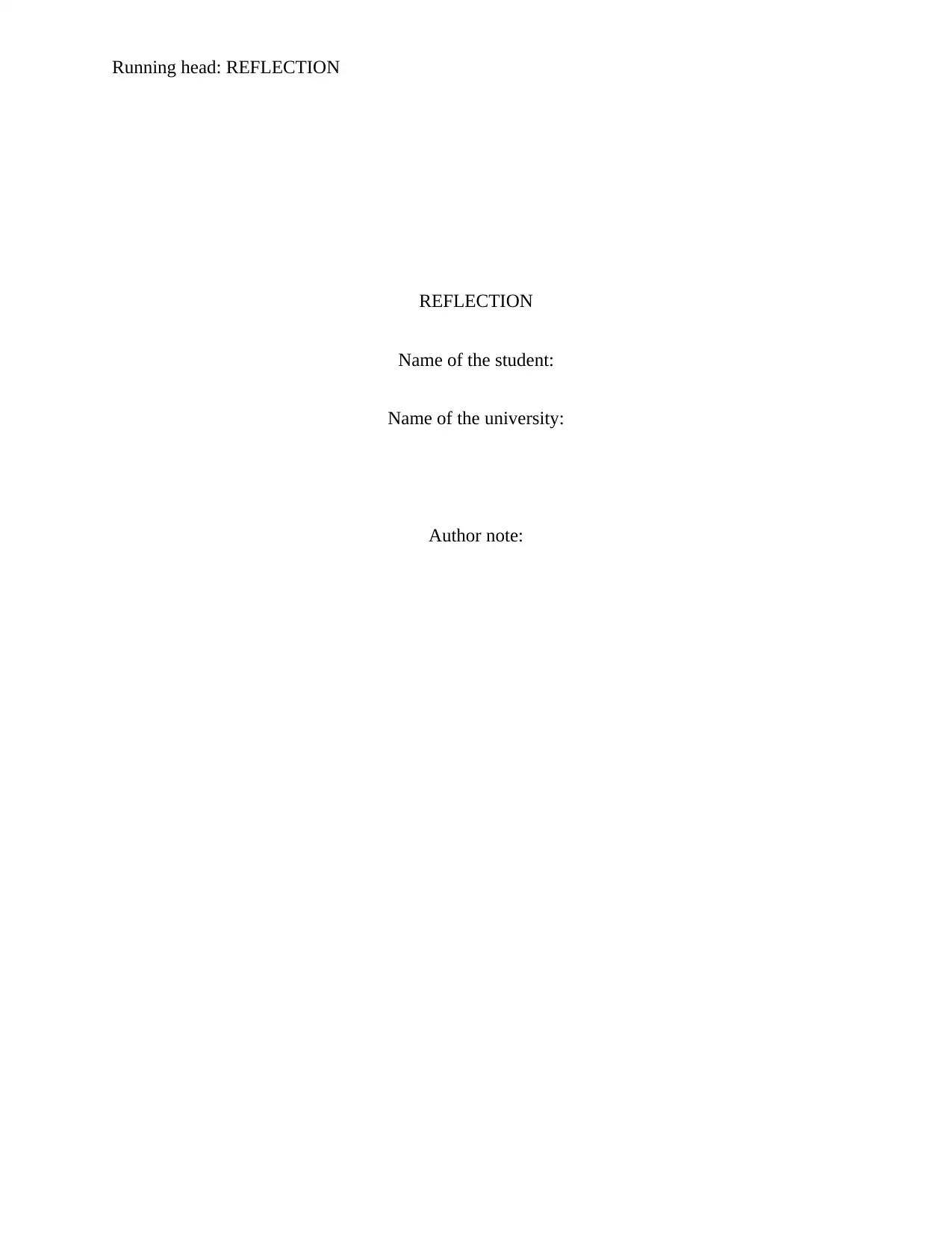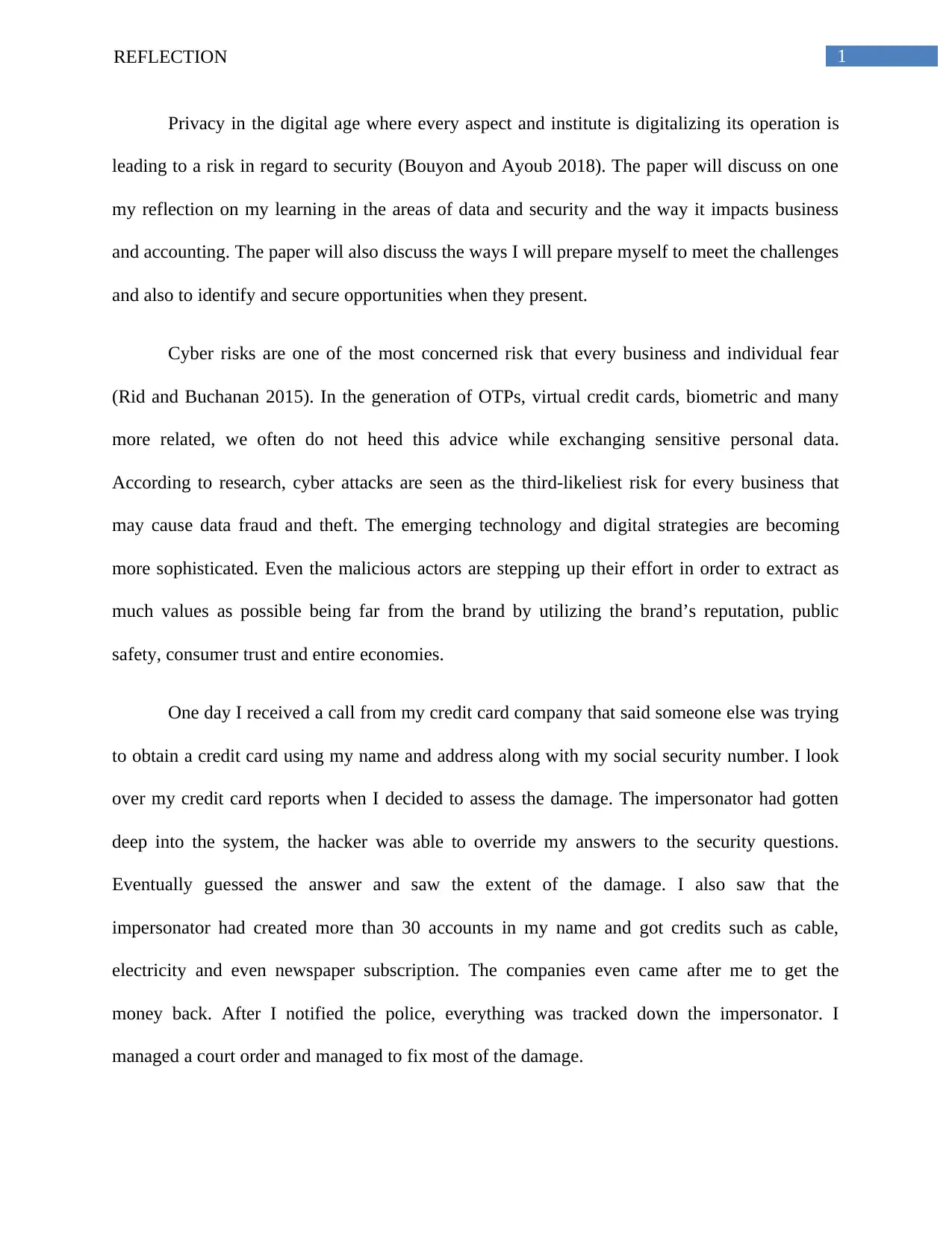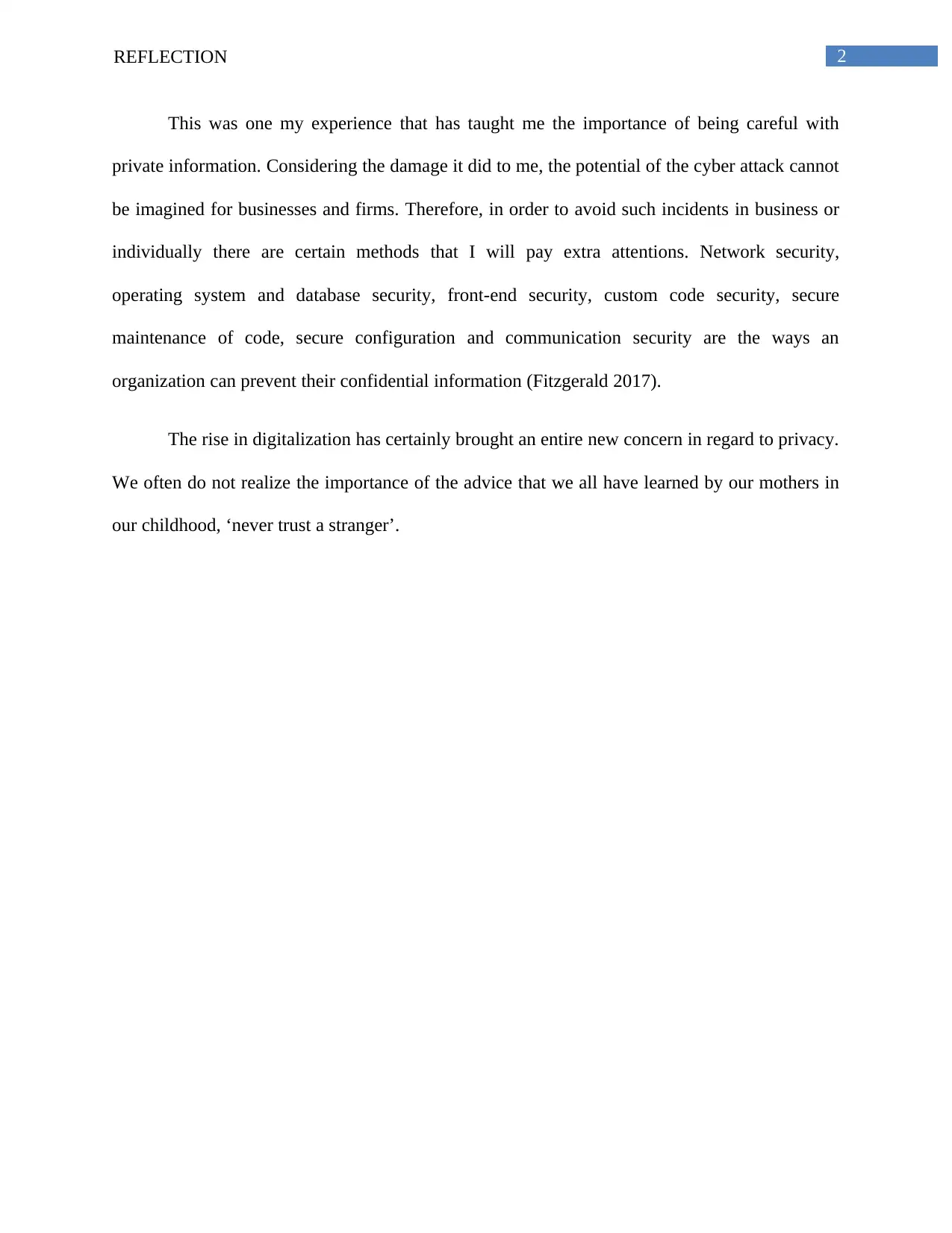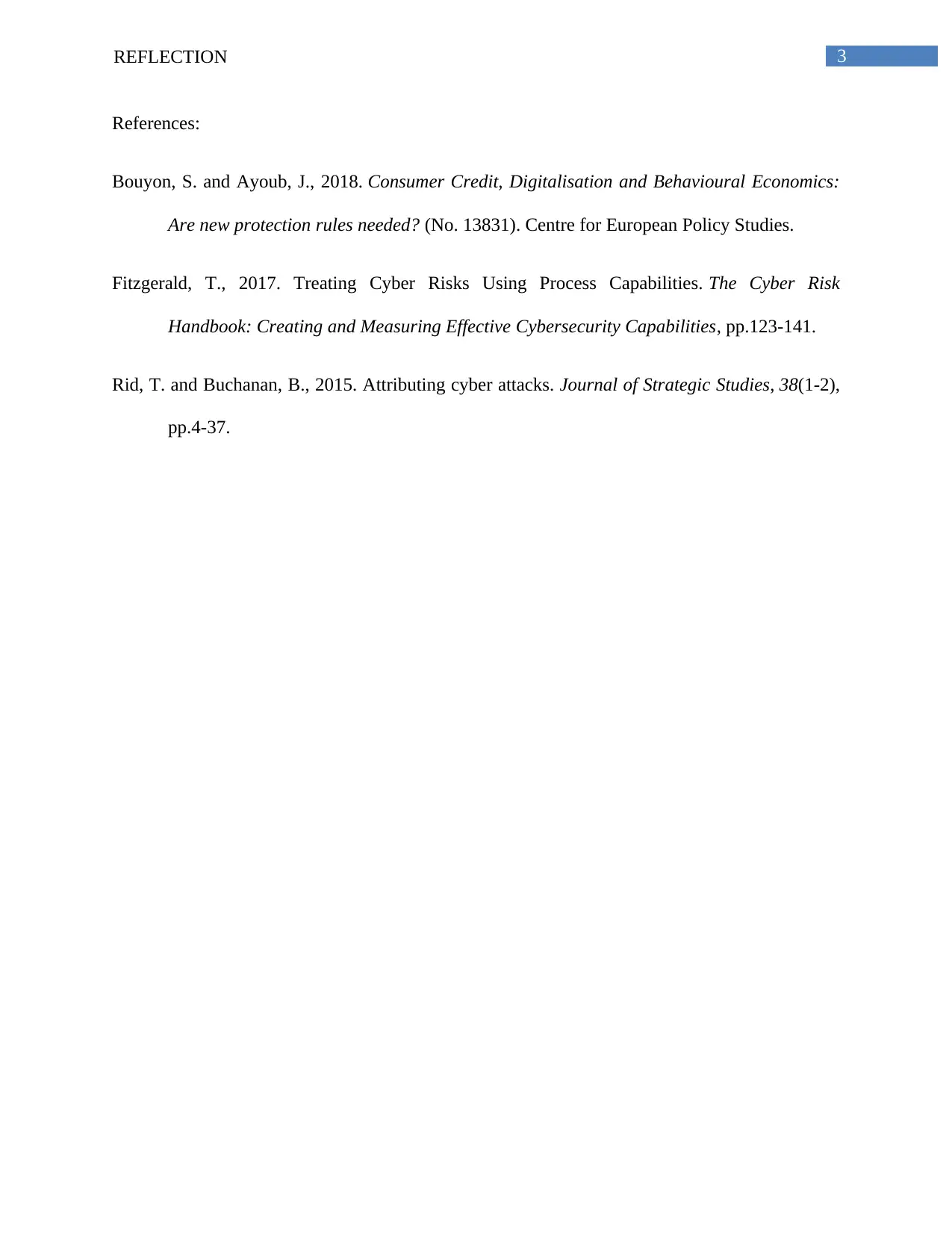Reflection on Data Security: Business Impact, Challenges, and Future
VerifiedAdded on 2023/01/23
|4
|623
|94
Essay
AI Summary
This essay presents a student's reflection on data security and its impact on business and accounting, highlighting the increasing risks in the digital age. The reflection includes a personal experience with identity theft, underscoring the importance of protecting private information. The essay also discusses various methods organizations can use to enhance their security, such as network security, operating system and database security, and secure code maintenance. It emphasizes the need for heightened awareness and proactive measures to mitigate cyber risks in both personal and professional contexts, especially with the rise of digitalization and sophisticated cyber threats. The student aims to apply these lessons to identify and secure future opportunities while addressing challenges in data security.
1 out of 4






![[object Object]](/_next/static/media/star-bottom.7253800d.svg)